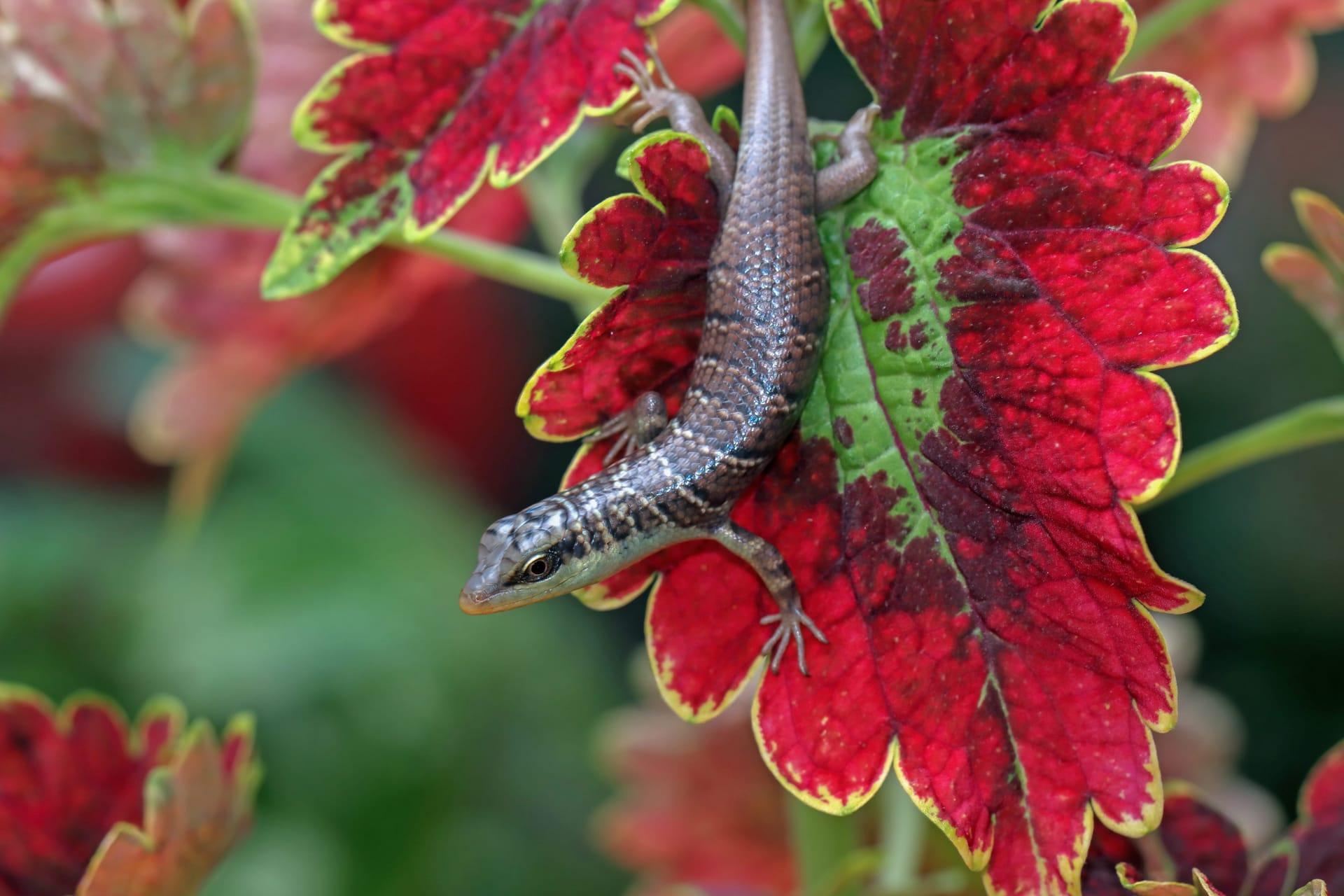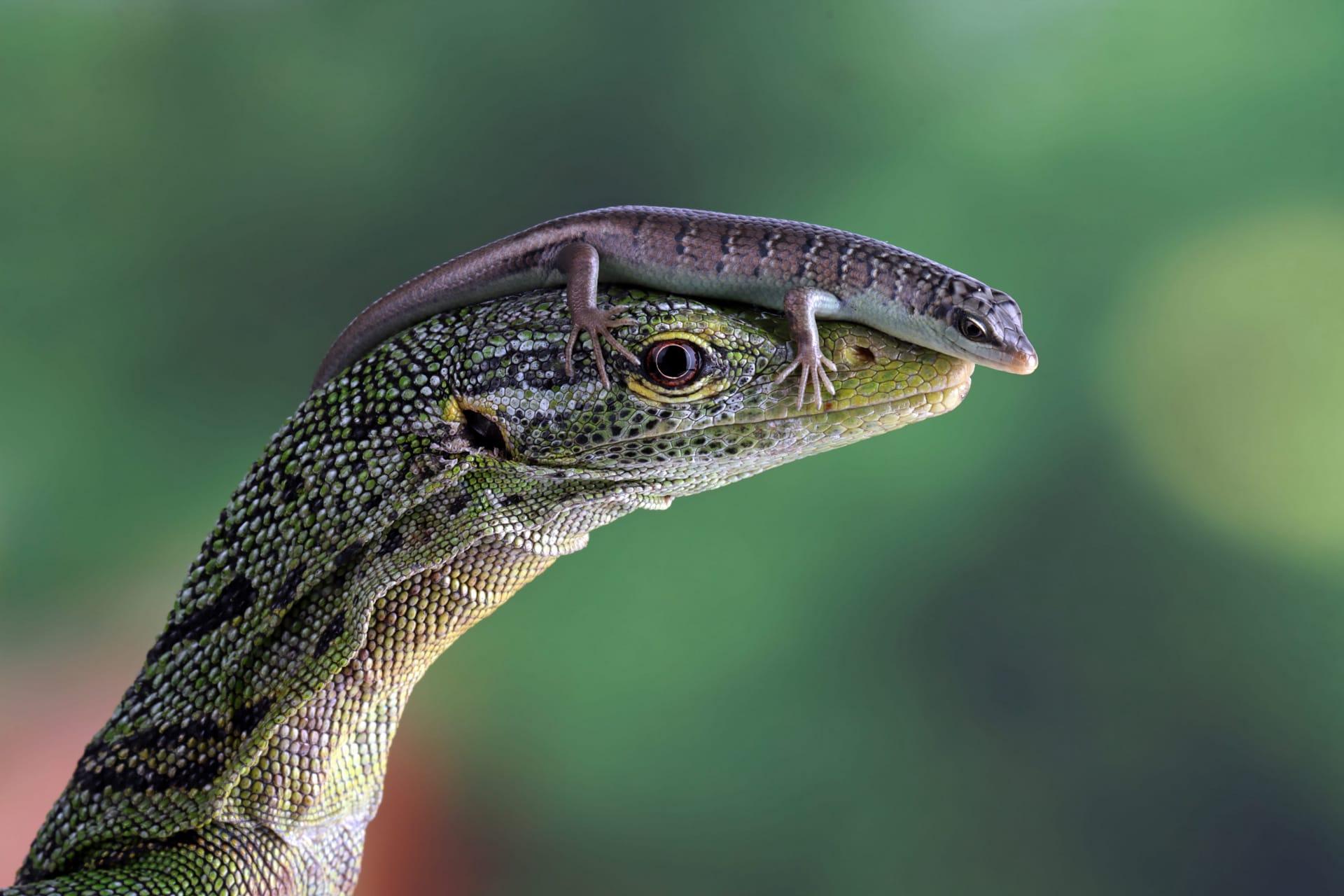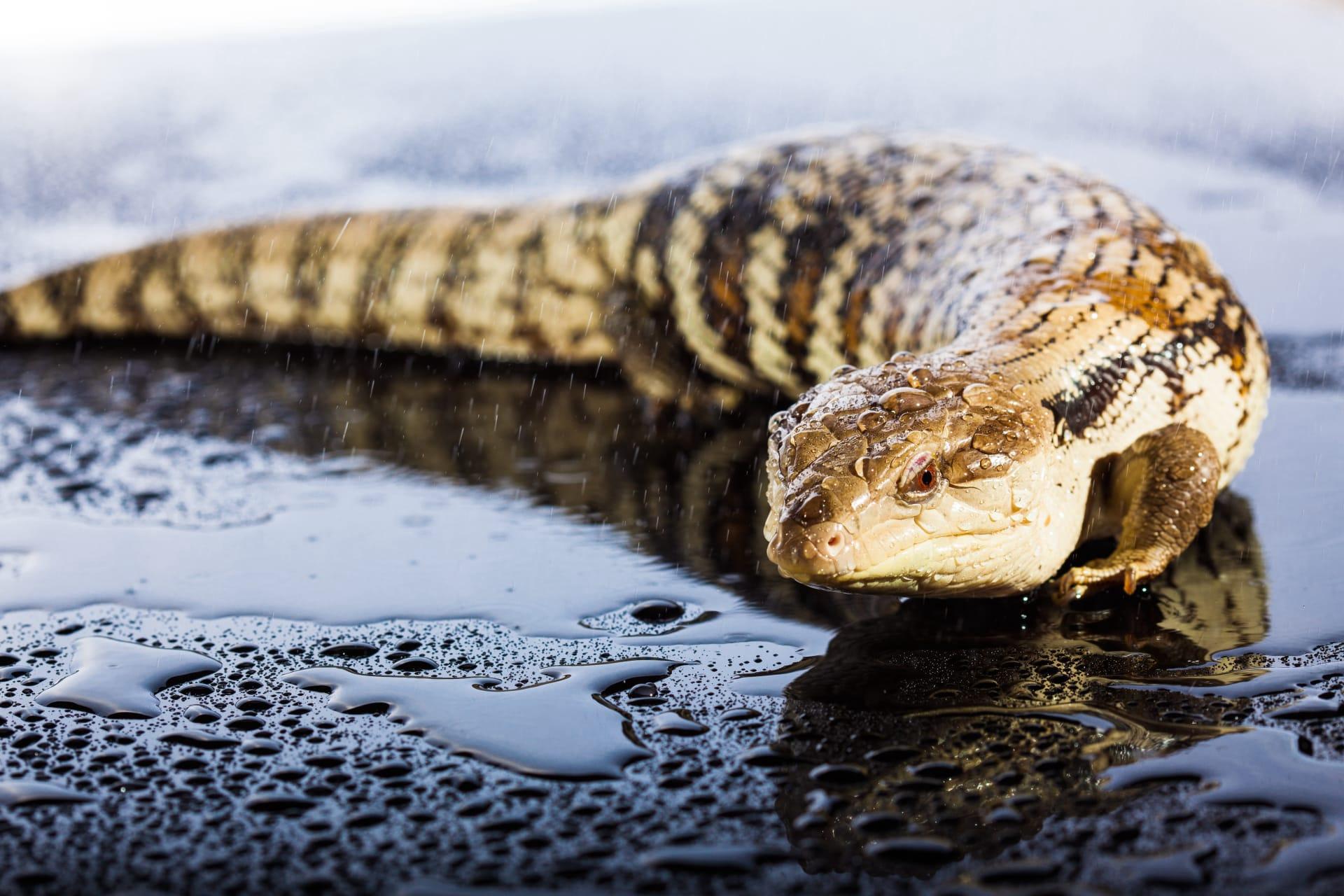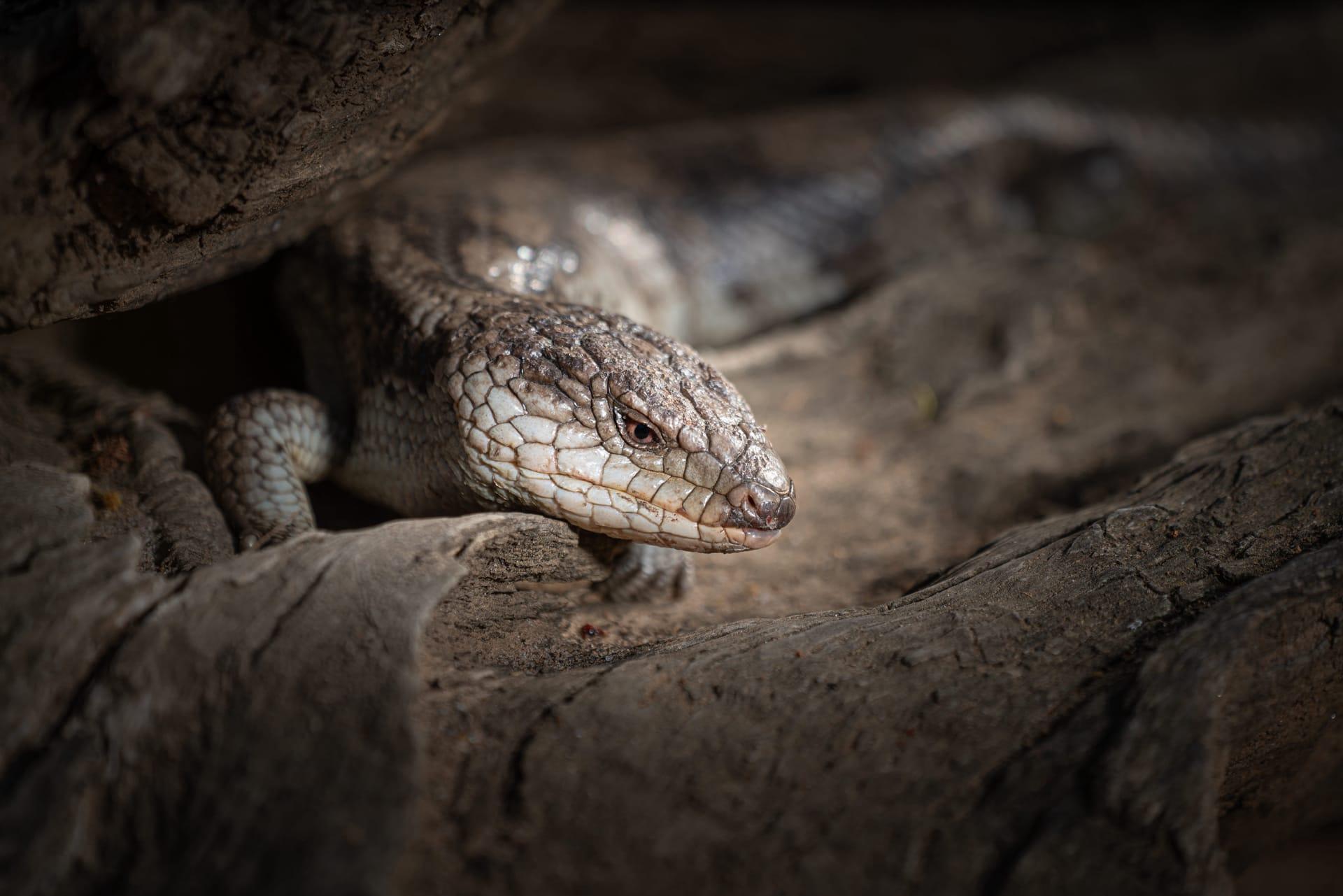Skinks
- Home /
- Mini Encyclopedia /
- Animal /
- Skinks
1
Skinks, a diverse and fascinating group of reptiles, belong to the family Scincidae. With over 1,500 species, they hold the title of one of the largest lizard families. Their classification is based on physical and genetic traits, resulting in a subdivision into various genera such as Eumeces, Lygosoma, and many more. These creatures display a wide range of body sizes, from the tiny, 7-centimeter-long Scincella lateralis to the robust, 35-centimeter Blue-tongued skink. Their distinct features include smooth, shiny scales and a streamlined body, making them easily distinguishable from other lizard species.
Skinks are found across the globe, thriving in a variety of environments from forests to deserts. They are especially prevalent in tropical and subtropical regions. Australia boasts a remarkable diversity of skinks, including the iconic Blue-tongued skink. In North America, skinks like the Five-lined skink are common in the eastern parts. In Asia, the Sun skink is widespread, found from India to Southeast Asia. Africa is home to many species as well, such as the African Red-sided skink. However, their presence is sparse in colder regions, reflecting their preference for warmer climates.

2
Question: Do skinks pose a danger to humans?
Answer: Contrary to some misconceptions, skinks are generally harmless to humans. While some larger species might bite if threatened or handled improperly, their bite is not toxic and causes minimal harm. Most skinks are non-aggressive and prefer to avoid human interaction. They are more likely to scurry away when encountered than to attack. In fact, their presence can be beneficial as they often feed on pests like insects, contributing to the control of these populations in gardens and homes.

3
Skinks have developed unique survival strategies to thrive in their habitats. One notable adaptation is their ability to lose and regenerate their tails. When a predator grabs a skink by its tail, the tail detaches, and the skink escapes, leaving the twitching tail behind to distract the predator. This process, known as caudal autotomy, is a remarkable defense mechanism. Additionally, many skinks have cryptic coloration, blending seamlessly into their environment. This camouflage aids in evading predators and ambushing prey.
Another survival strategy is their diverse diet, which includes insects, spiders, earthworms, and sometimes plants. This omnivorous diet allows them to adapt to various environments and food availabilities. Some skinks, like the Blue-tongued skink, have strong jaws to crack open snail shells. Skinks also exhibit diverse reproductive strategies. While most lay eggs, some, like the Three-lined skink, give birth to live young, an adaptation beneficial in colder climates where eggs may not survive.

4
In ecosystems, skinks play a vital role as both predators and prey. As predators, they help maintain the balance of insect populations, contributing to pest control. This is particularly beneficial in agricultural areas where skinks can naturally reduce the number of crop-damaging insects. Their diet also includes other small invertebrates, contributing to the biodiversity and health of their habitats.
As prey, skinks are an essential food source for a variety of animals. Birds, snakes, and larger mammals often rely on skinks for sustenance. The presence of skinks in an ecosystem indicates a healthy food chain and biodiversity. They also contribute to soil aeration through their burrowing activities, enhancing soil health and aiding plant growth. Thus, skinks play a multifaceted role in maintaining ecological balance.

5
Film: "The Secret World of Skinks" is a captivating documentary produced in Australia in 2019. It delves into the diverse lifestyles and adaptations of skinks, showcasing their unique traits and behaviors. The film spans various habitats, from tropical forests to urban areas, revealing how skinks have adapted to different environments and the challenges they face due to habitat loss and climate change.
Book: "Skinks: A Guide to Caring and Understanding" by Dr. James Collins, published in the United States in 2020, is an informative guide. It covers skink biology, behavior, and care, making it an invaluable resource for both enthusiasts and researchers. Dr. Collins' expertise in herpetology shines through in his detailed explanations and practical advice.
Book: "The Secret Life of Skinks" by Sarah Benson, released in the United Kingdom in 2021, explores the fascinating world of skinks through a scientific lens. Benson, a renowned wildlife biologist, combines field research and vivid narratives to provide an in-depth look at the social and ecological aspects of skinks. Her book is praised for making complex scientific information accessible and engaging.